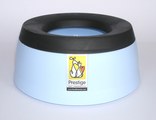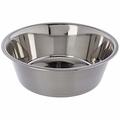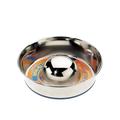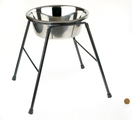When it comes to serious canine conditions you should be aware of, bloat and gastric torsion are high on the list.
Though the cause of this disease is often a mystery, the signs and symptoms are easy enough to recognise, despite being fairly consistent with other conditions. It is important that you do take the time to familiarise yourself with the symptoms so you can seek treatment for bloat immediately.
What is bloat?
Why the condition happens is not fully understood by vets, but it is characterised by the stomach filling with gas (bloat) and twisting (gastric torsion). Sometimes the stomach becomes so distended that it puts pressure on the diaphragm, causing breathing problems and cutting off blood flow to the heart.
 Occasionally the pressure inside the stomach becomes so great, and blood flow so restricted, that stomach tissue dies off, leading to ruptures in the stomach lining. In other cases, the spleen twists with the stomach, causing extensive damage to this organ.
Occasionally the pressure inside the stomach becomes so great, and blood flow so restricted, that stomach tissue dies off, leading to ruptures in the stomach lining. In other cases, the spleen twists with the stomach, causing extensive damage to this organ.
It is easy to see why immediate treatment is essential in suspected cases of bloat and gastric torsion. Even with treatment, it is estimated that as many as 30% of affected dogs will die.
Recognising bloat.
Bloat can either occur on its own, or as a precursor to gastric torsion.
Owners of affected dogs tend to report feeling ‘something isn’t quite right’ with their dog in the early stages of the condition. A dog may appear particularly anxious or distressed, may pant, pace and generally appear restless, repeatedly turning to look at its flank or abdomen.
As the condition progresses, further symptoms will include excessive drooling, unproductive vomiting, and visibly distended abdomen that is tender and taut to the touch.
In dogs with bloat without torsion (gas has accumulated in the stomach but not caused it to twist), symptoms can last for minutes to hours. This form of the condition is less life-threatening and easier to treat, although immediate attention still needs to be paid. In cases where torsion occurs, a dog will deteriorate rapidly, even within minutes, and may quickly go into shock.
How is bloat prevented?
Although bloat has presented in just about every breed of dog, large, deep-chested breeds are far more susceptible to the condition.
This is due to their anatomy and the increased angle of the stomach in relation to the oesophagus. In dogs with deeper chests and deeper abdomens, over time the gastric muscles are stretched and weakened, meaning they are more likely to twist. This stretching also allows the stomach to descend further into the abdomen, promoting bloat.
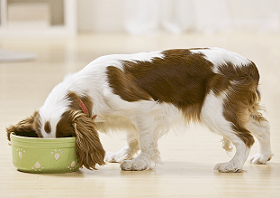 As dogs age, the gastric muscles are increasingly weakened, which heightens their overall risk.
As dogs age, the gastric muscles are increasingly weakened, which heightens their overall risk.
These factors can’t be prevented, but aspects of environment and care can. There is evidence to suggest that the following dogs are more susceptible to bloat than others.
- Those that are fed one large meal a day.
- Those that eat rapidly.
- Those that are exercised in the hour before and after a meal.
- Those that consume a large quantity of water after a meal.
Feeding smaller meals more often, restricting vigorous exercise and water intake directly after a meal, and trying to slow the feeding process down (slow feeders are available), are all ways to help reduce your dog’s risk of bloat, although there are no guarantees that doing this will remove the risk entirely, as the definitive cause of the condition remains unknown.
If your dog has ever experienced bloat or gastric torsion, please comment below and share your stories. What were the first signs? Had you done anything differently that day that may have caused it? The more people that know about bloat, the more dogs that can be saved from it!
Written by: Hannah


